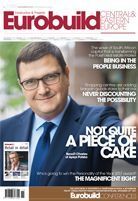Architects tend to work late and don’t like getting up early, said Mariusz Ścisło, the president of SARP on welcoming everyone to the home of the association. However, this relaxed beginning to the festival gave no hint of what was to follow. The workshops, discussions, and presentations of innovative products in the exhibition hall were to be topped off by the presentation of the Eurobuild Awards in Architecture. This was what awaited those who came to this year’s festival.
The first panel discussion was on how revolutionary changes in architecture over the last twenty years have changed the architecture of today but the opportunity was also taken to highlight the role that the association (which celebrates its 140th anniversary this year) has played over this period. Among the speakers in the discussion were three previous winners of the association’s Honorary Award: Marek Dunikowski, Krzysztof Ingarden and Bolesław Stelmach, but it was the speech given by speci






























































